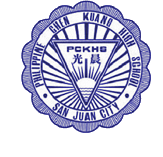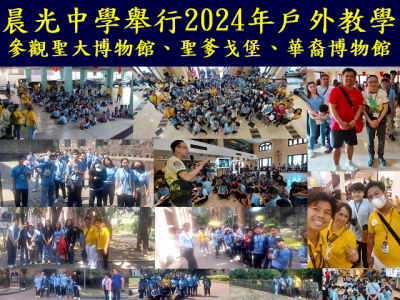Reading ten thousand books is not as beneficial as traveling ten thousand miles.” To broaden students’ horizons, the school spent two months planning, deliberating, and held its first outdoor education event after the pandemic on March 1st. The visit included the Museo ng Katipunan, Fort Santigo, Bahay Tsinoy Museum, Fort Santiago, and National Museum. Nearly two hundred people participated, including parents. The purpose of this outdoor education was for students to learn outside the classroom, not only to assist in verifying classroom knowledge but also to enhance students’ creativity, critical thinking, communication skills, problem-solving abilities, appreciation of beauty, and interpersonal relationships. Experiential learning-based outdoor education can even become a tool for behavioral therapy.
The first stop was a visit to the Katipunan Museum. The University of Sto Thomas Museum, known as the Holy Great Museum, is the oldest surviving museum in the Philippines, officially established in 1869. Originally located in the Manila city area, the museum later moved to its current location in the Grand Hall of Saint Thomas, completed in 1928, located in the Sampaloc area of Manila. The museum houses collections of scientific and artistic articles as well as artworks. Since 1941, the museum has collected works by Filipino masters such as Fernando and Pablo Amorsolo, Carlos Francisco, Vicente Manansala, and Galo Ocampo. The collection includes coins, items related to ethnology, medals, natural history, visual artworks, etc.
The second stop was a visit to the Fort Santiago. Fort Santiago witnessed significant events in Philippine history, including the Spanish colonial period, the Japanese occupation during World War II, and the American colonial period. This fortress is famous for its well-preserved ruins, gardens, and museums, showcasing the rich history and culture of the Philippines. Fort Santiago served as the military command center for several foreign powers in Philippine history, including Spain (1571 to 1898), Britain (during the Seven Years’ War from 1762 to 1764), the United States (1898 to 1946), and Japan (1942 to 1945). Due to its history of European colonization, indigenous population, and its location at the southernmost tip of South America, Fort Santiago boasts abundant natural beauty and resources.
The final stop was the Bahay ng Tsinoy Museum. The Bahay Tsinoy is also known as the “House of Chinese-Filipinos,” located within the walled city of Manila, Philippines. It houses the Kaisa-Angelo King Heritage Center, which documents the history, life, and contributions of the Chinese-Filipino community to the life and history of the Philippines. The museum is divided into various sections, including early contacts, the Parian district, colonial culture, the rise of the Chinese community, fighting for freedom, life in the 19th century, Chinese leaders, precious prints and photo galleries, martyr’s hall, ceramic collections, rare Philippine shell collections, and the contributions of the Chinese to national development. The museum is equipped with full air conditioning and is located inside the Kaisa-Angelo King Heritage Center building, which also houses the office of Kaisa Para sa Kaunlaran, Inc., the Chinbin See Memorial Library, the Await Keng Theater Hall, the Benito Cu Uy Gam Hall, and indoor activity venues including the Bao Hall and Madame Limpe seminar rooms. Director Zhuang Xuanliang personally introduced the museum to the students at our school, and finally, they took a group photo together.
Outdoor education can enhance various learning abilities. “If you only read books, it’s not very interesting, and it’s also difficult to remember. But if you can experience the content of the book firsthand, not only can you enjoy the pleasure, but it’s also easier to remember.” This is the most important point since the school started educational reform. After a whole day of activities, and despite the hot weather, everyone was very tired, but you could still see smiles on their faces, believing that they learned more knowledge during the day’s visit.


